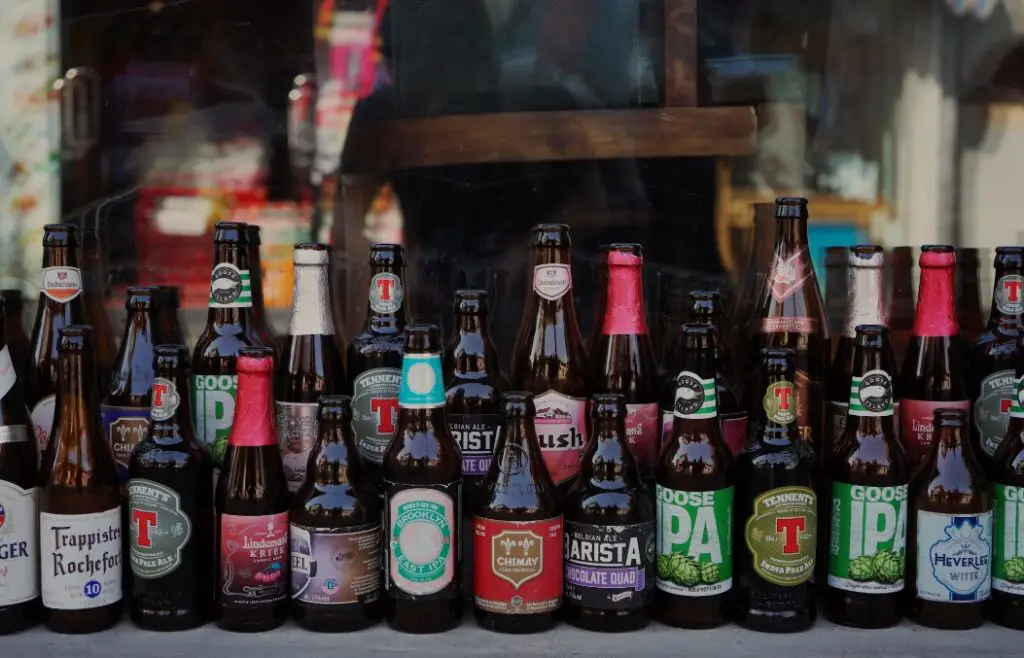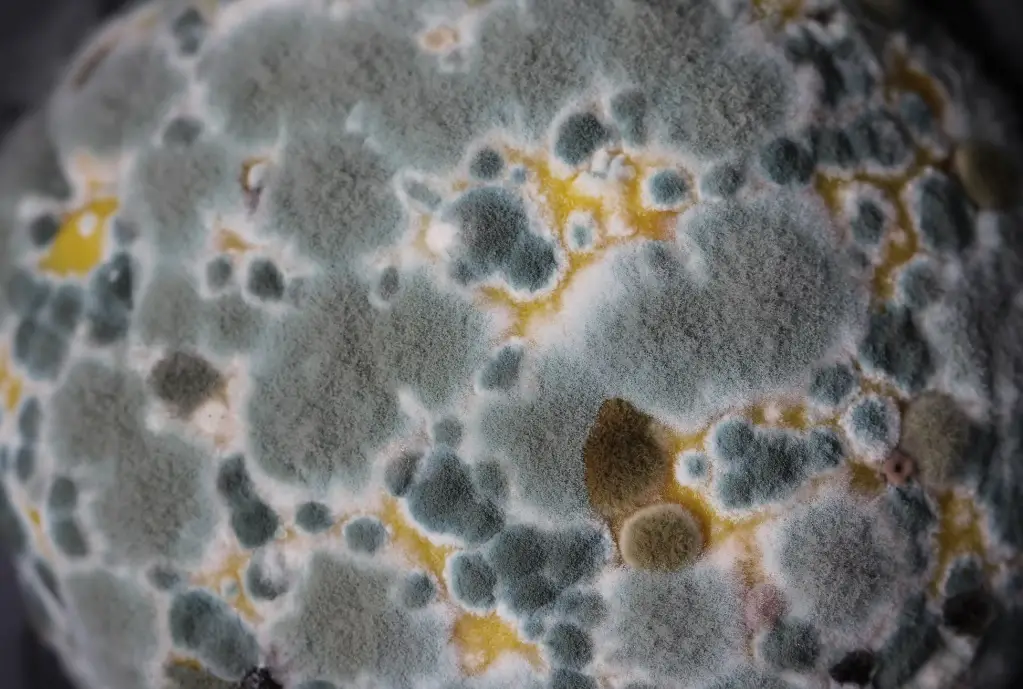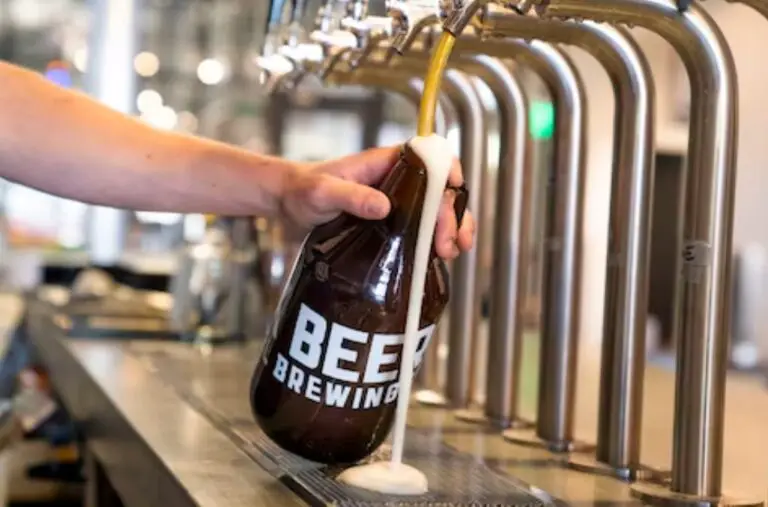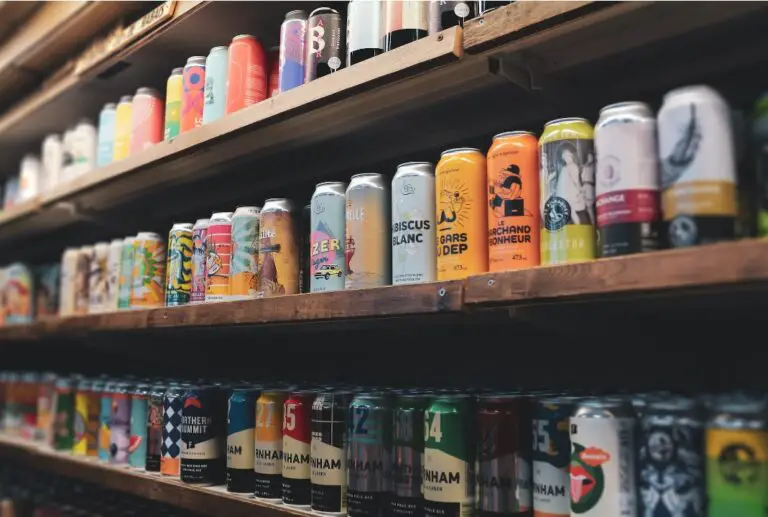What Yeast Is Used In Beer?
Yeast is used in beer production – but what type of yeast? What yeast is used in beer?
Yeast is a key player in brewing. There are two main types: ale yeast, contributing fruity and complex flavors at warmer temperatures, and lager yeast, providing a clean and crisp profile in cooler conditions. Brewers also experiment with wild yeast for added unpredictability.
Each yeast type brings its unique qualities, influencing the taste and aroma of the final brew. So, when you savor that cold beer, it’s the yeast that’s quietly working its magic to enhance your drinking experience.
Let’s delve deeper!

The Role of Yeast in Brewing
The role of yeast in beer production is paramount, primarily in the process of fermentation. Yeast is basically the producer of beer.
Yeast is a microorganism responsible for converting sugars present in malted grains into alcohol and carbon dioxide. This fermentation process not only produces the desired alcohol content in beer but also contributes significantly to its flavor, aroma, and mouthfeel.
During fermentation, yeast consumes the sugars extracted from malted grains and produces alcohol as a byproduct. The type of yeast used and the fermentation conditions play a crucial role in determining the beer’s characteristics.
Ale yeast strains, fermenting at warmer temperatures, produce fruity and estery flavors, while lager yeast strains, fermenting at cooler temperatures, contribute a clean and crisp profile.
Beyond traditional brewing yeast, some brewers also explore wild yeast strains for spontaneous fermentation, introducing complex and unpredictable flavors to the beer. The activity of yeast during fermentation is a delicate balance influenced by factors such as temperature, yeast strain, and oxygen levels.

Ale Yeast
Ale yeast is a key player in brewing, contributing unique characteristics and flavors to a variety of beer styles.
Characteristics and Attributes: Ale yeast strains are known for their ability to ferment at warmer temperatures, typically between 60 to 72°F (15 to 22°C). This warmer fermentation imparts distinctive fruity and estery flavors to the beer. Additionally, ale yeast can produce a wide range of aromas, including floral, spicy, and sometimes even phenolic notes, depending on the specific strain.
Brewing Conditions: Brewers often choose ale yeast for its versatility and quicker fermentation process compared to lager yeast. The warmer brewing conditions allow for a faster turnaround time, making it a preferred choice for many craft brewers. The flexibility of ale yeast also allows for creative experimentation, contributing to the diverse array of ale styles available.
Examples of Ale Yeast Strains:
- Saccharomyces cerevisiae (American Ale): Commonly used in American Pale Ales and IPAs, this yeast strain produces clean, crisp, and sometimes citrusy flavors.
- Saccharomyces pastorianus (English Ale): Used in English-style ales, it imparts fruity and malty characteristics, often with a subtle sweetness.
- Saccharomyces bayanus (Belgian Ale): Beloved by Belgian brewers, this yeast strain adds complex, spicy, and fruity notes to a variety of Belgian beer styles.
- Saccharomyces diastaticus (Farmhouse Ale): Popular in farmhouse or saison-style ales, this yeast strain thrives in higher temperatures, producing earthy, peppery, and spicy flavors.

Lager Yeast
Lager yeast, the counterpart to ale yeast, is known for its distinct characteristics and its preference for cooler fermentation temperatures.
Characteristics and Attributes: Lager yeast strains are characterized by their ability to ferment at cooler temperatures, typically between 44 to 55°F (7 to 13°C). This cooler fermentation results in a clean and crisp beer profile, with fewer fruity and estery notes compared to ale yeast. Lager yeasts produce fewer byproducts during fermentation, allowing the malt and hop flavors to shine through with greater clarity.
Brewing Conditions: Lager brewing typically requires more patience than ale brewing due to the slower fermentation process at lower temperatures. This extended fermentation and conditioning period, known as lagering, contributes to the smooth and refined qualities associated with lager-style beers. Lager yeast is commonly used in styles such as Pilsners, Bocks, and Märzens.
Examples of Lager Yeast Strains:
- Saccharomyces pastorianus (German Lager): Known for its role in classic German lagers like the Munich Helles and Bock, this yeast produces clean, malt-forward flavors with a crisp finish.
- Saccharomyces carlsbergensis (Czech Lager): Used in Czech Pilsners, this yeast strain imparts a well-balanced profile, showcasing both malt and hop characters with a noticeable bitterness.
- Saccharomyces bayanus (American Lager): Commonly used in American light lagers, this yeast contributes a clean, neutral flavor profile, allowing for a subtle malt sweetness to come forward.
- Saccharomyces pastorianus (Vienna Lager): Utilized in Vienna lagers, this yeast adds a touch of maltiness and a clean, slightly toasty finish.

Wild Yeasts and Mixed Fermentation
Wild yeasts and mixed fermentation represent a fascinating realm within the craft beer landscape, where brewers embrace unpredictability and complexity in flavor profiles.
Wild Yeasts: Wild yeasts, often found in the environment, bring an element of spontaneity to beer brewing. Strains such as Brettanomyces, Saccharomyces wild variants, and others introduce unique and diverse flavors, ranging from funky and earthy notes to fruity and tart characteristics. Brewers intentionally expose their beer to the open air or use wooden barrels to allow these wild yeasts to influence the fermentation process.
Mixed Fermentation: Mixed fermentation involves the intentional blending of different yeast strains, often combining ale or lager yeast with wild yeast and bacteria like Lactobacillus or Pediococcus. This approach results in a harmonious interplay of flavors, creating complex and layered beers. Sour ales, farmhouse saisons, and barrel-aged concoctions are examples of styles that benefit from mixed fermentation, offering a spectrum of taste experiences from sour and funky to oaky and vinous.
Examples of Beers with Wild Yeasts and Mixed Fermentation:
- Lambics and Gueuze: These traditional Belgian styles employ wild yeast strains and spontaneous fermentation, resulting in complex, sour, and effervescent beers.
- American Wild Ales: Craft brewers in the United States often experiment with mixed fermentation to create sour ales with a wide range of flavors, from fruity to funky.
- Flanders Red Ale: This Belgian style utilizes mixed fermentation to produce a beer with a malty backbone and subtle tartness, often aged in oak barrels.
- Farmhouse Saisons: Brewers may incorporate wild yeast strains alongside traditional ale yeast to create rustic and fruity farmhouse ales.
Yeast Management in Brewing
Yeast management is a critical aspect of brewing, influencing the quality and consistency of the final beer product. Proper yeast handling ensures a healthy fermentation process, and brewers employ various techniques to optimize yeast performance.
Yeast Propagation and Pitching Rates: Yeast propagation involves cultivating a sufficient quantity of yeast cells before introducing them to the wort. Brewers carefully control the pitching rate, or the amount of yeast added to the wort, to achieve the desired fermentation characteristics.
Underpitching (insufficient yeast) or overpitching (excessive yeast) can lead to off-flavors or incomplete fermentation. Maintaining the right pitching rate is crucial for yeast vitality and a successful fermentation.
Fermentation Temperature Control: Fermentation temperature is a key factor in determining the flavors and aromas produced during the brewing process. Different yeast strains thrive at specific temperature ranges, and brewers meticulously control these conditions to achieve desired characteristics.
For example, ale yeast typically ferments at warmer temperatures (15 to 22°C), while lager yeast operates at cooler temperatures (7 to 13°C). Precise temperature control helps prevent off-flavors and ensures a clean and well-balanced beer.
Yeast Harvesting and Re-pitching: Yeast harvesting involves collecting and separating viable yeast cells at the end of fermentation. This harvested yeast can be reused in subsequent batches, a practice known as re-pitching. Re-pitching provides cost savings for brewers and maintains consistency in beer profiles.
However, careful attention must be given to yeast health and sanitation practices to avoid contamination and off-flavors. Proper yeast harvesting and re-pitching contribute to the sustainability of brewing operations and help preserve the unique characteristics of specific yeast strains.

Specialty Yeast Strains
A. Belgian Yeast Strains:
Belgian yeast strains are renowned for their unique and expressive characteristics, contributing to the diverse and often complex flavors found in Belgian-style beers.
1. Characteristics and Flavor Profiles: Belgian yeast strains are known for their ability to produce a wide array of flavors and aromas, ranging from fruity and spicy to phenolic and estery. These strains often impart a distinctive yeast-driven character that can include notes of banana, clove, bubblegum, and even hints of pepper. The high fermentation temperatures commonly used with Belgian yeast strains contribute to the development of these complex and nuanced flavors. Additionally, some Belgian yeast strains may produce higher levels of alcohol, adding warmth to the beer.
2. Examples of Belgian-Style Beers:
- Belgian Dubbel: This style showcases a rich maltiness with dark fruit flavors such as raisins and plums, often complemented by a subtle spiciness from the yeast. Trappist Dubbels are a classic example.
- Belgian Tripel: Known for its golden color and strong alcohol content, the Tripel features a complex flavor profile with fruity esters, a honey-like sweetness, and a noticeable spiciness. Westmalle Tripel is a renowned example.
- Belgian Witbier: A refreshing and cloudy wheat beer, Witbier is characterized by its light body, citrusy and coriander spice notes, and a slightly hazy appearance. Hoegaarden is a well-known Witbier.
- Saison: While Saisons are often associated with French and Belgian farmhouse ales, the yeast strains used contribute fruity and peppery notes, with a dry and refreshing finish. Saison Dupont is a classic representation.
B. Wheat Beer Yeast:
Wheat beer yeast strains play a pivotal role in the creation of refreshing and often cloudy beers that highlight the unique characteristics of wheat malt.
1. Characteristics and Attributes: Wheat beer yeast strains are chosen for their ability to complement the maltiness of wheat with specific esters and phenols. These strains typically produce a combination of fruity and spicy notes, enhancing the overall aroma and flavor profile of wheat-based brews. The yeast contributes to the effervescence and mouthfeel, creating a distinct and enjoyable drinking experience.
2. Examples of Wheat Beer Styles:
- Hefeweizen: Originating from Germany, Hefeweizen is a traditional wheat beer known for its cloudy appearance, fruity banana esters, and clove-like spiciness. The yeast used in Hefeweizens is crucial in defining the beer’s iconic flavor profile.
- Witbier: Although also mentioned under Belgian yeast strains, Witbier deserves special attention. This style, often brewed with a significant portion of wheat, relies on specific yeast strains to produce a refreshing beer with citrusy and spicy notes, complemented by the addition of orange peel and coriander.
- American Wheat Beer: In the United States, brewers use wheat beer yeast strains to create American Wheat Beers, characterized by a clean, mild flavor profile with subtle wheat malt sweetness and a moderate hop presence.

New Yeasts in Brewing and The Future of Yeasts
Strain Development and Modification: Scientists and brewers are working on developing or modifying yeast strains to achieve specific characteristics. This includes traits such as increased tolerance to higher alcohol levels, improved flocculation (settling of yeast after fermentation), and the ability to produce novel flavors.
Wild and Mixed Fermentation: The popularity of wild yeast strains and mixed fermentation styles is likely to continue. Brewers may explore and isolate new wild yeast strains from various environments, contributing to the creation of complex and unique sour and farmhouse-style ales.
Genetic Engineering: Advances in genetic engineering technologies may allow brewers to tailor yeast strains more precisely. This could involve manipulating specific genes to control flavor production, fermentation dynamics, and other aspects of yeast behavior.
Hybrid Strains: Brewers might experiment with hybrid yeast strains, combining the characteristics of ale and lager yeast to create unique profiles. Hybrid strains could offer the flexibility of ale yeast with the clean fermentation characteristics of lager yeast.
Alternative Fermentation Microorganisms: Beyond traditional yeast, brewers might explore the use of alternative fermentation microorganisms, such as non-Saccharomyces yeasts and various bacteria. These microorganisms can contribute distinct flavors and aromas to the beer.
Wrapping It Up
Yeasts are the unsung heroes, transforming simple ingredients into the diverse array of flavors and styles that define our favorite beers.
From the clean and crisp profiles of lagers to the fruity complexities of ales, and the wild spontaneity of mixed fermentations, yeasts play a pivotal role in shaping the beverage we love. As technology advances and brewers continue to explore new strains and techniques, the future promises even more exciting possibilities.

I am a young architect with a passion that goes beyond blueprints… it’s beer! undertherosebrewing.com is more than just a blog, it’s a manifestation of my lifelong dream to explore, read, and learn everything about beer. Join the blog on this unfiltered and genuine adventure into the heart of beer culture. Cheers!






